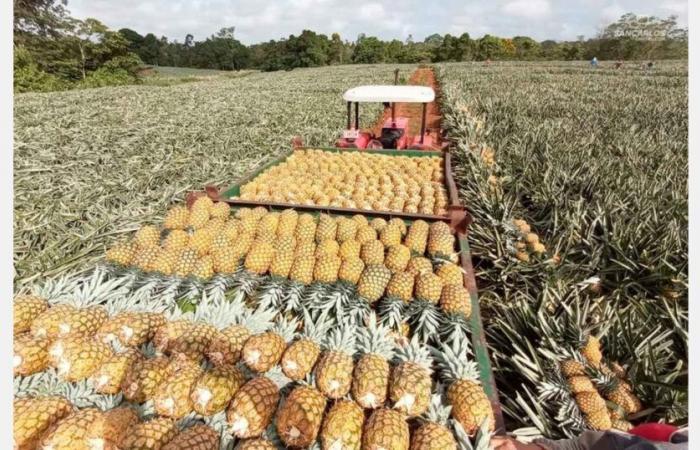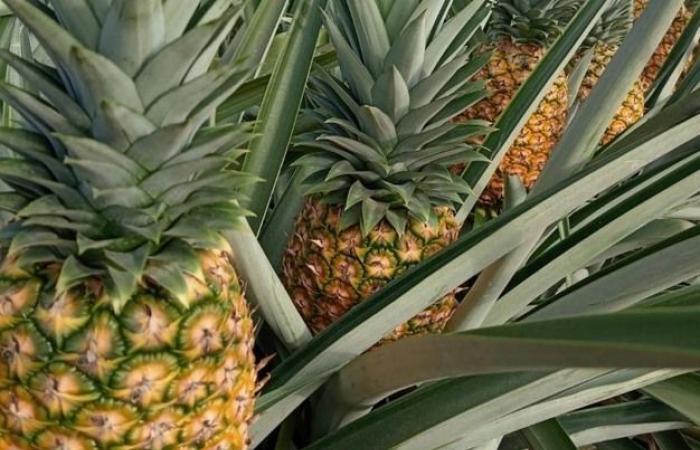The production of pineapple in Costa Rica, which covers around 50,000 hectares, and the Cámara de Piñeros Unidos (which represents around 35 % of exports) are currently going through a low supply scenario due to extreme weather phenomena. “This shortage has generated a significant increase in prices on markets such as Europe and the United States, where a pineapple box has reached 18 to 20 euros, levels never seen for over ten years,” share Wilberth Gómez, president of the Cámara de Piñeros Unidos, Greivin Delgado, Executive Director, and Gina Vargas, administrative assistant.

Production is maintained throughout the year, but there are three key moments that depend on demand and weather conditions: the high season (weeks 44 to 20), the period of greatest natural production and the post-natural period, which coincides with a low offer, just like the previous year. The weather conditions marked by the passage of El Niño to the Niña have, at one time or another, had a direct impact on the quality, the caliber and the volume of the fruits available for both export and local industry.
The United States, with around 54 %, and Europe, with 40 %, share exports of pineapple from Costa Rica. “However, the United States has paid between one and two more dollars per box, which, added to the recent announcement of possible customs duties (which already amount to 10 %), generates uncertainty. According to Mr. Gómez, more than the tax itself, it is the way it could affect the wallet and the purchasing power of the end consumer which arouses concerns.

“In addition to its traditional markets in Europe and the United States, Costa Rica pineapple began to penetrate new destinations such as Asia -including Japan -, the Middle East, Eastern Europe and specialized markets which require very mature and tropical fruit -aroma air. This growth was also stimulated by the diversification of formats, such as dehydrated, frozen pineapple, juices, liqueurs and jams, which made it possible to access niches with higher added value and to adapt to the demands of new consumer profiles. There is also an increasing trend in agro-ecological production with a reduction in chemicals, the use of bioproducts and environmental conservation practices. »»
With regard to structural challenges, they highlight the unfavorable exchange rate, the high cost of inputs, the need for technological investments and the pressure to comply with high social and environmental standards. Costa Rica pineapple is today one of the most certified cultures in the country, which represents an additional economic effort for producers.

“In the field, the use of bio-incredibles and microorganisms has increased in order to reduce the application of chemicals, supported in certain cases by laboratories developed by the producers themselves. The gradual introduction of technologies, mechanization and automation processes responds to both the need for greater efficiency and the limited availability of the workforce. In addition, adjustments have been made to the packaging and post-harvest level in order to improve the conservation of products during transport, in particular towards distant destinations. These measures aim to adapt to the current market requirements, which favors good -taste products, adequate health conditions and reduced environmental impact. »»
Finally, Cámara de Piñeros Unidos reaffirms her commitment to sustainability and competitiveness. “The objective is to ensure that, in 100 years, Costa Rica continues to be a world leader in pineapple, with a quality product, produced in a responsible manner and adapted to the new requirements of the global consumer. »»
 For more information:
For more information:
Wilberth Gómez, Greivin Delgado Et Gina Vargas
United Piñeros Chamber
Such. : +506 6196 3635
[email protected]
www.camaradepinerosunidos.com












